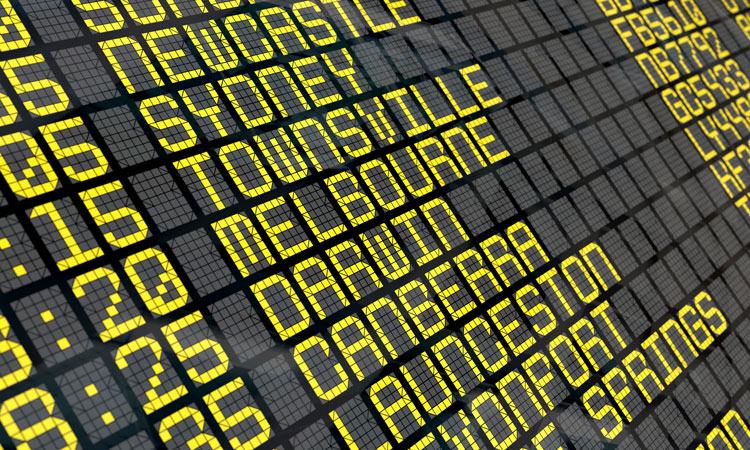Creating a brand new ending for Perth Airport and Western Australia
- Like
- Digg
- Del
- Tumblr
- VKontakte
- Buffer
- Love This
- Odnoklassniki
- Meneame
- Blogger
- Amazon
- Yahoo Mail
- Gmail
- AOL
- Newsvine
- HackerNews
- Evernote
- MySpace
- Mail.ru
- Viadeo
- Line
- Comments
- Yummly
- SMS
- Viber
- Telegram
- Subscribe
- Skype
- Facebook Messenger
- Kakao
- LiveJournal
- Yammer
- Edgar
- Fintel
- Mix
- Instapaper
- Copy Link
Posted: 23 June 2021 | Kevin Brown | No comments yet
Kevin Brown, Chief Executive Officer of Perth Airport, tells International Airport Review about how his airport navigated the COVID-19 pandemic and how reinvention is now their new driving force.


In the early 1990s, the NFL’s Philadelphia Eagles had a sign in their locker-room which read: “Though no one can go back and make a brand new start, anyone can start from now and make a brand new ending.”
COVID-19 has brutally swept aside many of the assumptions that underpinned the global aviation industry. Tens of thousands of jobs have been lost; airlines have gone into administration; and industries such as higher education, tourism and hospitality, which rely on the aviation sector, are struggling for survival. Airports – which collect revenue on a per passenger basis – have faced catastrophic drops in passenger numbers and revenue as governments implement tough border restrictions.
In early May 2020, we received the first confirmed passenger numbers to highlight the extent of that devastation. April 2020 had been the first full month where we could assess the impact of closed domestic and international borders. Overnight, Perth Airport’s (PER) international passenger numbers had plummeted by 99 per cent, while inter-state passenger numbers had been slashed by 97 per cent.
Travel within Western Australia was also impacted by regional travel bans, falling by more than 50 per cent with only the fly-in, fly-out (FIFO) workers of the resource sector holding up the numbers. Our retailers faced closure, our car parks were empty and many of the tenants on our estate – who had also been hit by COVID-19 – were seeking rent relief. This was a potential financial tsunami for Perth Airport. But this is not a story about despair or surrender. This is a story of resilience based on the quality of our people, the belief in our mission and our ability to adapt, innovate and rebound.
In the early 1990s, the NFL’s Philadelphia Eagles had a sign in their locker-room which read: “Though no one can go back and make a brand new start, anyone can start from now and make a brand new ending.”
COVID-19 has brutally swept aside many of the assumptions that underpinned the global aviation industry. Tens of thousands of jobs have been lost; airlines have gone into administration; and industries such as higher education, tourism and hospitality, which rely on the aviation sector, are struggling for survival. Airports – which collect revenue on a per passenger basis – have faced catastrophic drops in passenger numbers and revenue as governments implement tough border restrictions.
In early May 2020, we received the first confirmed passenger numbers to highlight the extent of that devastation. April 2020 had been the first full month where we could assess the impact of closed domestic and international borders. Overnight, Perth Airport’s (PER) international passenger numbers had plummeted by 99 per cent, while inter-state passenger numbers had been slashed by 97 per cent.
Travel within Western Australia was also impacted by regional travel bans, falling by more than 50 per cent with only the fly-in, fly-out (FIFO) workers of the resource sector holding up the numbers. Our retailers faced closure, our car parks were empty and many of the tenants on our estate – who had also been hit by COVID-19 – were seeking rent relief. This was a potential financial tsunami for Perth Airport. But this is not a story about despair or surrender. This is a story of resilience based on the quality of our people, the belief in our mission and our ability to adapt, innovate and rebound.
Reinvention as a driving force
Going back to make a brand new start was never an option. COVID-19 had simply changed all of the fundamentals. Our world has changed – we needed to seize the opportunity to change with it.
Disciplined but agile crisis management helped us to survive the initial maelstrom; with swift action to reduce costs, while at the same time introducing the measures demanded by COVID-19, such as physical distancing and increased hygiene measures in our terminals. We also worked closely with our retail partners to help them to place their businesses in the best possible position to pull through.
But survival is not enough. Neither is waiting for a much hoped for recovery. Reinvention has become our new driving force. Reinvention allows us to accept that things are not going back to the way they were. We cast off the shackles of trying to recover what had been lost and instead freed up our team to re-imagine our business. Our team set about stripping back the customer journey to its most basic elements and began re-imagining what it would look like in a touch-free world.
The future of seamless travel
The future will see biometric processing, frictionless parking, contactless payment solutions, click & collect and a renewed focus on wellness. COVID-19 has radically shortened the timeframe for the delivery of these technologies.
In partnership with our terminal retailers, we identified gaps in the market and helped them to take advantage of opportunities. When airlines cut back on in-flight meal services due to COVID-19, we helped our retailers to create and promote pre-packaged meals for purchase prior to boarding. With an increased passenger focus on health, our retail partners also began marketing COVID-safe hygiene packages, including masks and hand sanitiser.
Creative pop-up stores in our Terminal 2 – which remained busy due to FIFO traffic – helped stores to clear products before their use-by dates and have hopefully created new marketing opportunities that will continue post-pandemic.
The resources sector was continuing to operate but had put its FIFO workforce on longer on-site swings. With eight of our 13 car parks closed due to the collapse in passenger numbers, we saw the opportunity to package a parking product for FIFO workers, offering them a discounted fixed price to cover their longer periods away from home.
Rebuilding confidence
Complimenting these product innovations was a range of measures to give passengers, businesses and governments the confidence that we could manage air travel safely in the COVID-19 environment. We became the first Australian airport to receive an international COVID-safe rating from Airports Council International (ACI).
This continued confidence in the safety of air travel will be critical to rebuilding our industry.
The commencement of the phased roll out of vaccines across Australia and the world is providing a much-needed light at the end of the tunnel for aviation.
Australia is well positioned to quickly build momentum behind a recovery. Before the pandemic, overseas travel injected more than $60 billion into Australia’s economy, with more than nine million foreign travellers flying in to explore all that our country has to offer.
Australia has been a global example of how to manage the pandemic, with less than 100 active cases at the time writing. Western Australia and its capital city of Perth have not had any community transmission of COVID-19 in more than 10 months. There is no safer city to visit, do business or study in than Perth, Western Australia.
There is a golden opportunity for Western Australia to lead the rest of the nation in rebuilding our international student market, reviving our tourism industry and re-engaging with the national and global business community.
A cautious, but confident, recovery
We will need a roadmap from state and federal governments to chart our way cautiously, but confidently, back to open borders, open skies and open economies.
This will, no doubt, focus initially on reviving domestic travel schedules and giving Australians the confidence to book holidays and business trips without the fear of snap border closures. This can be done safely and sensibly as the vaccination programme rolls out.
We should also be looking to decide what is required to re-open our international borders. This, again, will need to be done in a cautious manner and will logically focus on travel ‘bubbles’ with international destinations with low or no community COVID-19 transmission.
Once again, Perth is ideally placed to be at the forefront of this recovery, given our accessibility to the growth markets of Asia and the fact that we had the only direct service between Australia and Europe. There is little doubt that direct services will become the preferred option for COVID-conscious travellers.
But it’s not as simple as flicking a switch and expecting everything to return to a pre‑pandemic normal. Governments will need to invest in bringing airlines and passengers back to the skies. The immediate future will be one of fewer airlines with fewer planes, with less capacity.
The nations and cities that make those investments early will be the first to prosper by securing their fair share of that reduced capacity. Those who hesitate may be waiting a while for their chance to recover. One thing that is beyond question is that the aviation sector was among the first to be impacted by the COVID-19 outbreak and will arguably be among the last to recover. We don’t know when the shadow cast by the COVID-19 pandemic will finally lift, but we have made a bold and decisive start to create a ‘brand new ending’ for Perth Airport and aviation in Western Australia.


Issue
Related topics
Airport crisis management, COVID-19, Passenger experience and seamless travel, Passenger volumes, Regulation and Legislation, Safety, Self-service, Terminal operations


















